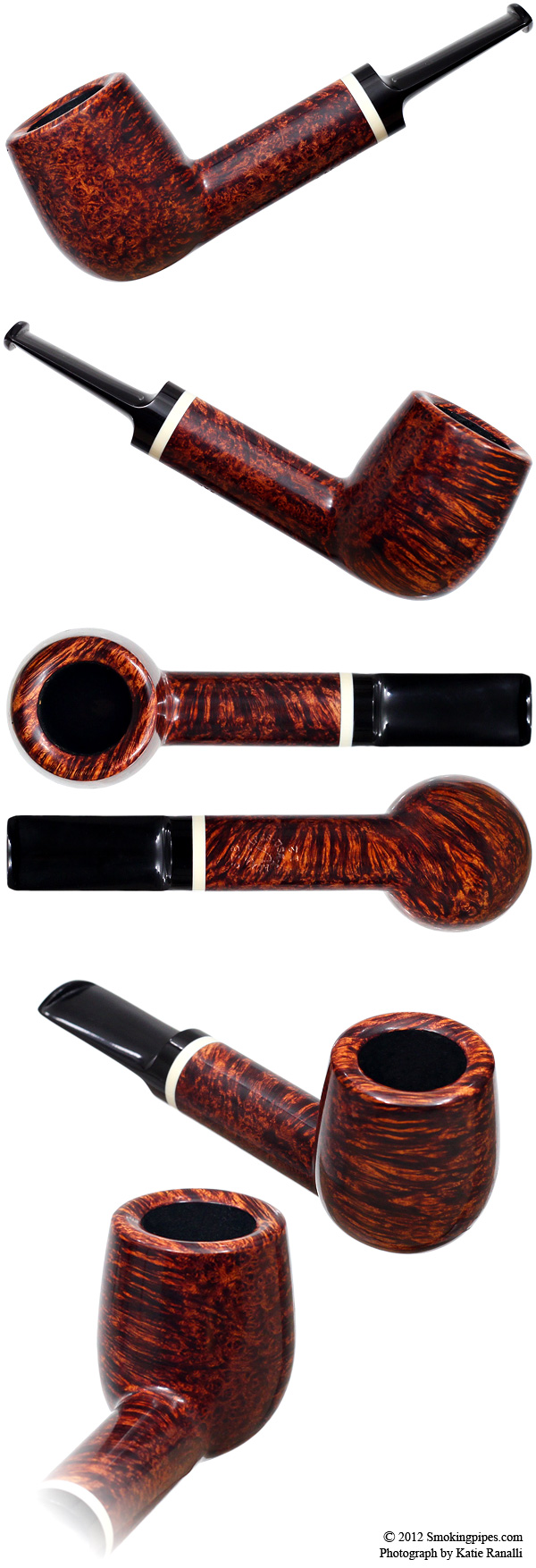OK, first up is a pipe by the guy who has taught me the most about pipe making so far: Jeff Burt-Gracik aka J Alan pipes. This isn't what most people would consider a masterpiece, but I promise you, if you can replicate this pipe, you'll do just fine in the pipe world. Comments below.

First off, Jeff's work is influenced by the Danish school. He was able to work with Todd early on in his career as well as Tonni Nielson - not too shabby. Jeff also spent a fair amount of time with Jody Davis. Todd himself was fairly heavily influenced by the Danes, but I confess I'm not sure if he had spent time with Tom Eltang and Lars Ivarsson prior to hosting Jeff (he also spent time with Bo Nordh, but that's a slightly different style). Regardless, the provenance is there.
You'll notice the bowl on this is slightly more curved than a Dunhill, and this is typical of the Danish style. The bowl has a slight "belly" where the bowl is widest about a third of the way up (roughly where the top of the shank intersects it), and this is also characteristic of the Danish style. Where that belly sits will vary between makers (Chonowitsch's are lower for example), but nearly all classic Danish pipes will have one. Admittedly, this particular piece is a bit more subtle in those two aspects than Jeff's typical classic, but they're still identifiable here.
The shank is relatively stout which also seems to be common for Danish pipes. Compare that to a Dunhill, and it will look absolutely fat. New makers, note how razor straight the top and bottom of the shank are. You should be able to put your pipe on a flat, granite surface and have it contact the full length of the shank. The domed rim is also nearly universal in the Danish style. Also note how crisp the lines of the stem are. The cheeks of the bowl are well defined. Note the proportions of the pipe; the stem is a good length for the pipe. As a point of reference, this pipe is 4.55" so if the button looks large, that's why. Finally, pay attention to the how clean the overall shaping is. There is no fat to be trimmed, no excess.
I mentioned the Danish school several times, and it occurs to me that this is a new term to some. The natural follow-up question would be why do I care? In general, the Danish style is considered the best example of what a pipe should be. It's more focused on flowing lines, and it has more warmth and less rigidity than the classic English styles. It's much more structured than the organic feel of Japanese pipes, but it's a very comfortable structure. It isn't ugly like Italian pipes (sorry, there are exceptions to this, but on the whole, yikes!), and it's more symmetric and less "artsy" than the recently-emerging Russian style. Viewing this from a business point of view, most high end collectors are into Danish pipes, the other styles are a bit hit or miss.
I hope this is helpful!
